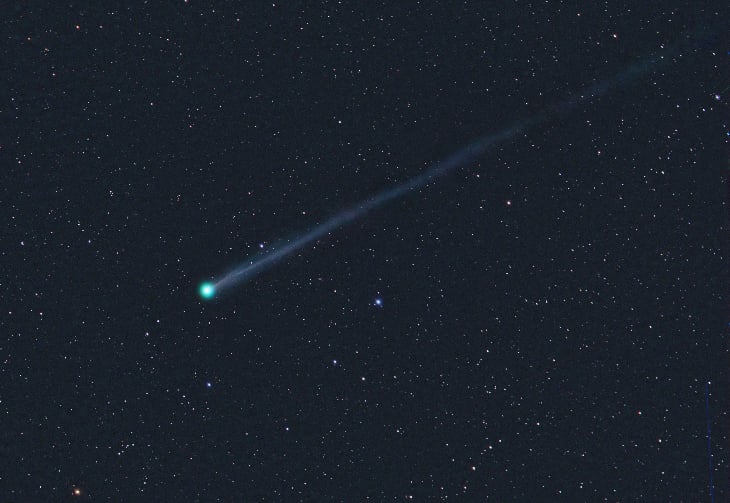In a predicable clockwork Universe, nothing grabs a skywatcher's attention like a potential new comet. If predictions hold true, Comet C/2025 F2 SWAN could make a decent binocular dawn apparition through mid-April, before it vanishes from view.
Anatomy of the Discovery
Discussion about a potential new comet started last week (yes, right around April Fool's Day) on the Comets-ml messaging board. Alert experts made note of an +11^th^magnitude object seen moving through the field of view of the Solar Wind Anisotropies (SWAN) instrument. SWAN is part of the joint NASA/ESA Solar Heliospheric Observatory's (SOHO) suite of instruments. Like the LASCO C2/C3 instruments aboard the spacecraft,SWAN sees sungrazing comets cross its view from time to time.
The suspect object that would become Comet C/2025 F2 SWAN crosses the SWAN instrument's field of view. NASA/ESA/SWAN/Michael Mattiazzo.
Vladimir Bezugly noted the motion of the object in SWAN's view from March 22 to the 28^th^, and Michael Mattiazzo and Robert Matson also reported seeing the comet in SWAN at the end of the month.
Comet F2 SWAN from April 8th. Credit: Gianluca Masi/The Virtual Telescope Project.
The discussion really picked up in the first week of April, however, as the comet seemed to have experienced an outburst and jumped up in brightness to +9^th^magnitude right around April 5^th^. Clearly, this is an active one worth paying attention to, and observers rushed to recover the comet low at dawn.
.jpg) The orbit for Comet C/2025 F2 SWAN. Credit: NASA/JPL.
The orbit for Comet C/2025 F2 SWAN. Credit: NASA/JPL.
The comet crept up on us undetected, approaching the inner solar system and the Earth from a general sunward direction. On a 1.4 million year orbit (as per tentative estimates), the comet reaches perihelion 0.33 Astronomical Units (AU) or 31 million miles/50 million kilometers from the Sun on May 1^st^, just exterior to the orbit of Mercury. The comet originally had the informal name 'SWAN25f' in message board discussions, and now received the official designation C/2025 F2 SWAN today. This is the 15th comet discovery for SWAN.
Finding and Prospects
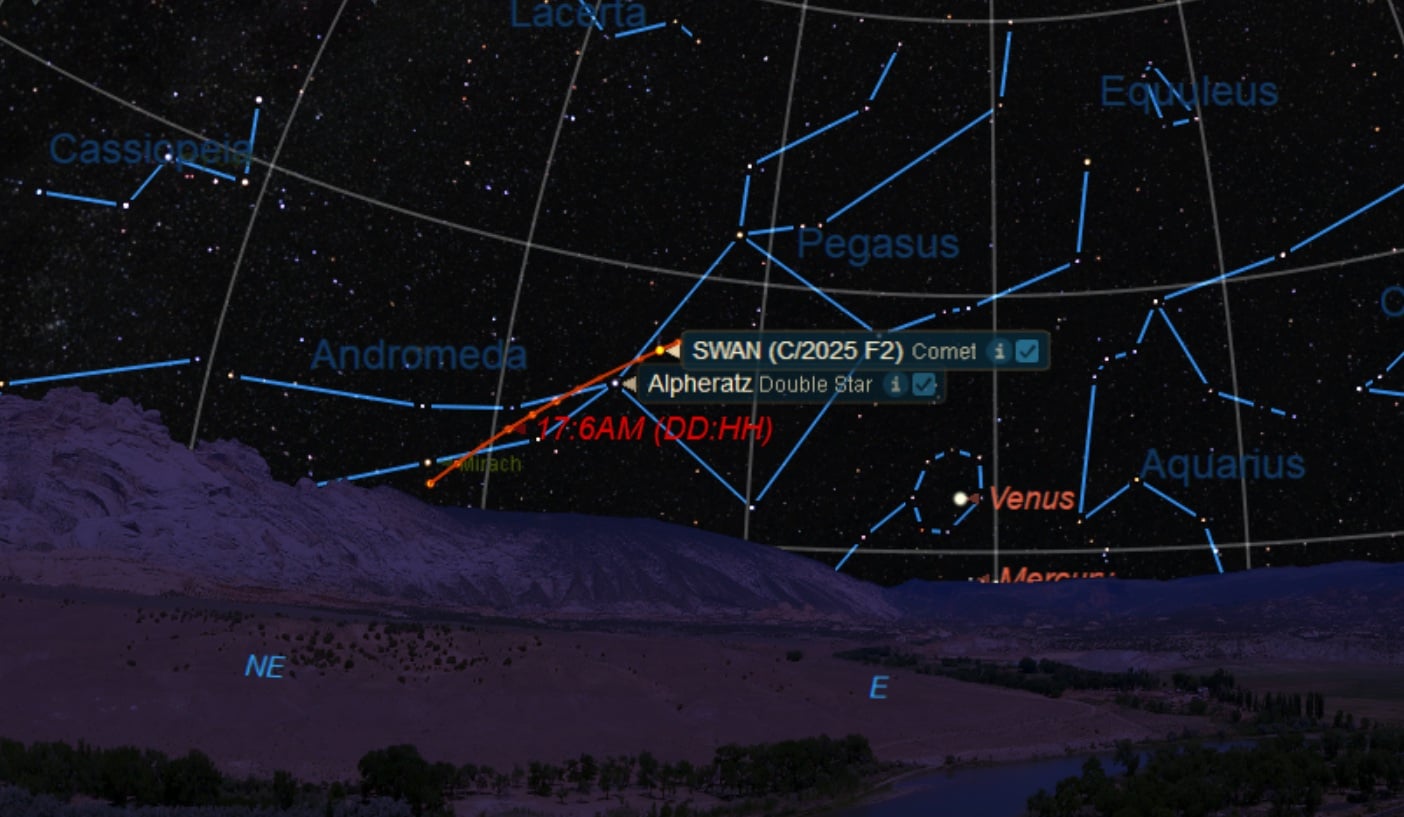 The dawn path of Comet F2 SWAN from April 10th through 20th. Credit: Starry Night.
The dawn path of Comet F2 SWAN from April 10th through 20th. Credit: Starry Night.
As of writing this, the comet sits at magnitude +8, and is in the corner of the Square of Pegasus asterism, four degrees west of the +2nd magnitude star Alpheratz(Alpha Andromedae). The comet will pass less than a degree from the star on April 12-13^th^, and run lower to the horizon for the next week, hovering at an elevation of just over 10 degrees to the NW about an hour before dawn for mid-northern hemisphere observers.
The comet apparently had an outburst around April 6th," says astrophotographer Michael Jaeger. "However, I am no longer sure that it will be bright because it has not increased its brightness any further. This may only be a temporary development... we'll have to wait and see.
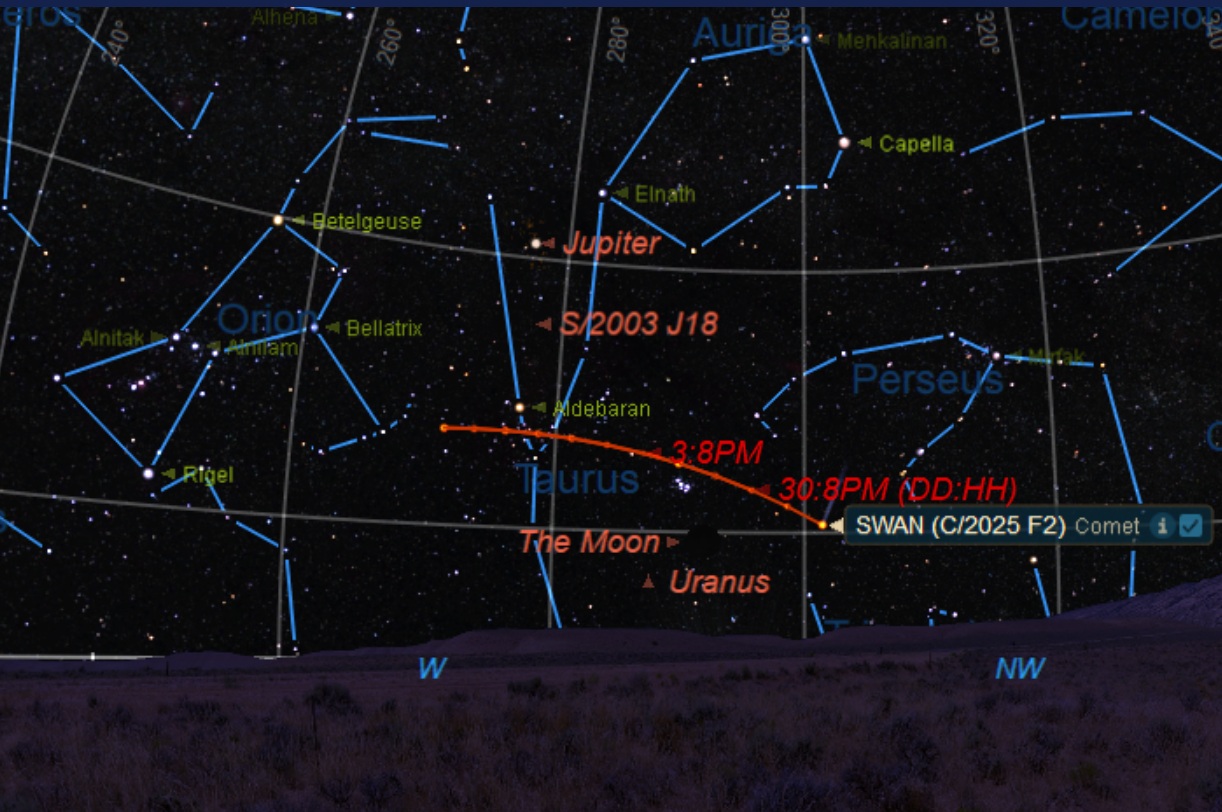 The evening apparition for Comet F2 SWAN from May 1st to the 12th. Credit: Starry Night.
The evening apparition for Comet F2 SWAN from May 1st to the 12th. Credit: Starry Night.
Unfortunately, this apparition is also a fleeting one, as the comet then plunges thorough the constellations Andromeda and Triangulum and passes 20 degrees from the Sun as seen from the Earth on the final days of April. A following brief evening apparition will be a bashful one for northern observers, as the comet then takes the plunge down through Taurus, though the Hyades on May 7^th^, into Orion and Eridanus southward and heads back out of the inner solar system. At its best near perihelion, the comet may top out at +4^th^magnitude.
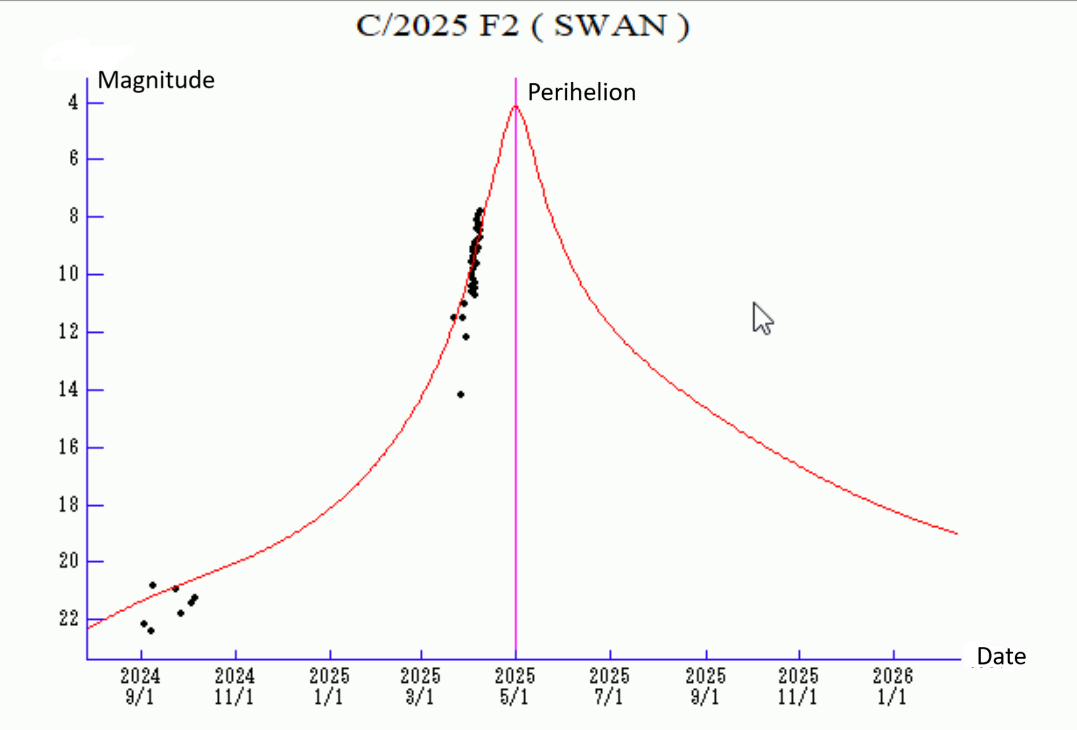 The projected light curve (red line) for Comet F2 SWAN, versus actual observations (black dots). Adapted from Seiichi Yoshida's Weekly Information About Bright Comets.
The projected light curve (red line) for Comet F2 SWAN, versus actual observations (black dots). Adapted from Seiichi Yoshida's Weekly Information About Bright Comets.
I managed to catch a brief glimpse of Comet C/2025 F2 SWAN this morning, observing from Wake Forrest, North Carolina about an hour before sunrise. The comet appeared as a greenish fuzzball with the hint of a spiky tail in the view of the Dwarf3 smartscope… but there wasn't a trace of it seen with binoculars.
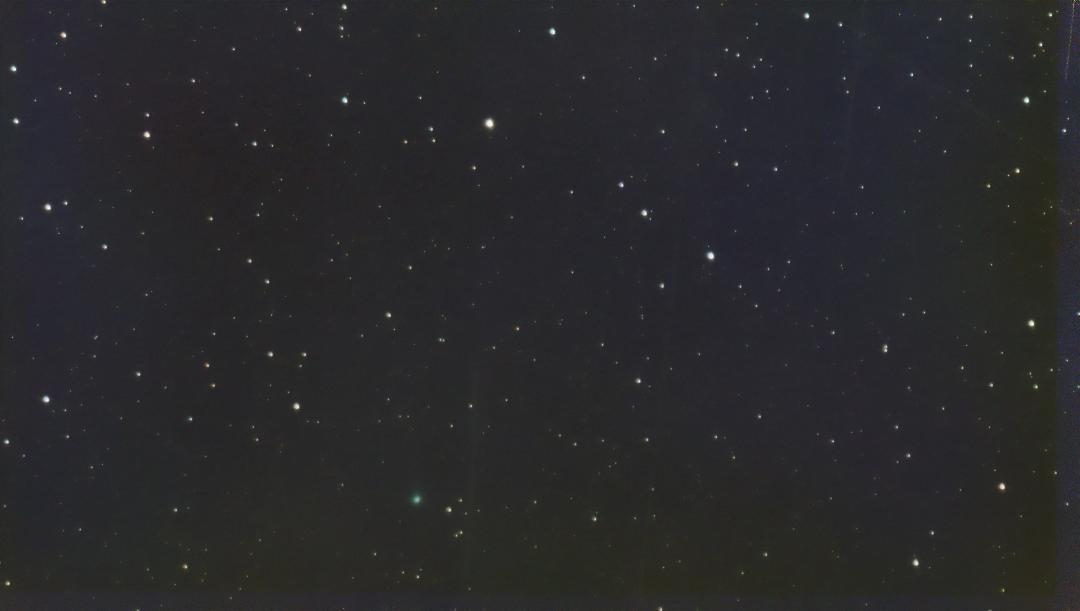 Comet F2 SWAN (green dot, bottom center) imaged on April 9th using a Dwarf3 smartscope. Credit: Dave Dickinson.
Comet F2 SWAN (green dot, bottom center) imaged on April 9th using a Dwarf3 smartscope. Credit: Dave Dickinson.
The Central Bureau for Astronomical Telegrams now has a bulletin posted yesterday announcing the discovery of the comet, and the information is now trickling out to various planetarium and tracking programs such as Heavens-Above and Starry Night.
SWAN, SOHO, and its successor the Compact Coronagraph (CCOR2) aboard the NOAA-19 satellite have proven themselves as amazing assets. Not only do they perform their objectives of solar and space weather monitoring admirably, but they've also advanced the study of sungrazing comets, another plus. And this is often accomplished thanks to online amateur sleuths who are willing to meticulously comb through online images day after day, looking for anything out of place. The discovery of Comet C/2025 F2 SWAN highlights this effort, and the dedication of the online astronomy community.
If skies are clear, be sure to check out Comet C/2025 F2 SWAN while you can.
 Universe Today
Universe Today
